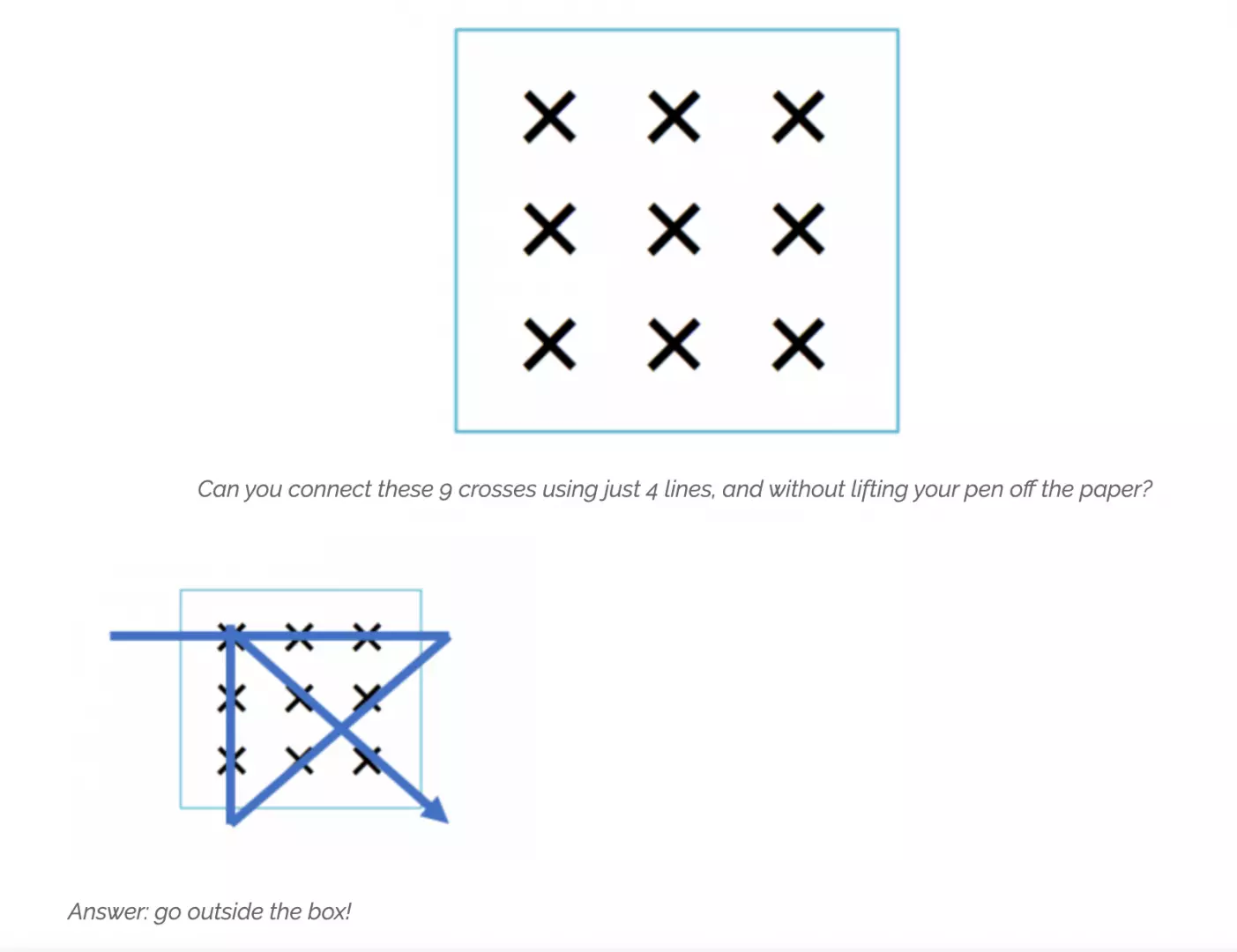Comments
- No comments found

Thinking outside the box means thinking differently, unconventionally, or from a new perspective.
When it comes to thinking outside the box, it's essential that you are prepared to take risks and make mistakes.
Learning something new can help you look at the things you already know how to do from a completely different angle.

There are many ways to force yourself to think outside of the box. Here are some suggestions:
Creative thinking is the force that propels us forward in life.
Thinking outside the box is about dispensing with constraints and is a sought after skill in the business world.
We can train ourselves to alter the self-organizing patterning systems by learning how to coerce our minds into taking alternative routes.
The best way to do this is practice, each day break your daily habits and try to break away from your usual way of doing things. This helps see past those invisible but very much present constraints that we have built ourselves.
Our brain is truly an amazing machine. It’s designed to consistently find the most practical solutions while investing the least amount of energy.
Thinking outside the box requires creativity and risk taking, and with risk taking mistakes can happen. Failure is often broad and numerous before great success and that is especially true for new and original concepts, products and design.
Paul is a professional keynote conference speaker and expert facilitator on innovation and lateral thinking. He helps companies improve idea generation and creative leadership. His workshops transform innovation leadership skills and generate great ideas for business issues. His recent clients include Airbus, Microsoft, Unilever, Nike, Novartis and Swarovski. He has published 30 books on lateral thinking puzzles, innovation, leadership and problem solving (with over 2 million copies sold). He also acts as link presenter at conferences and facilitator at high level meetings such as a corporate advisory board. He has acted as host or MC at Awards Dinners. Previously, he was CEO of Monactive, VP International of MathSoft and UK MD of Ashton-Tate. He recently launched a series of podcast interviews entitled Insights from Successful People.
Leave your comments
Post comment as a guest